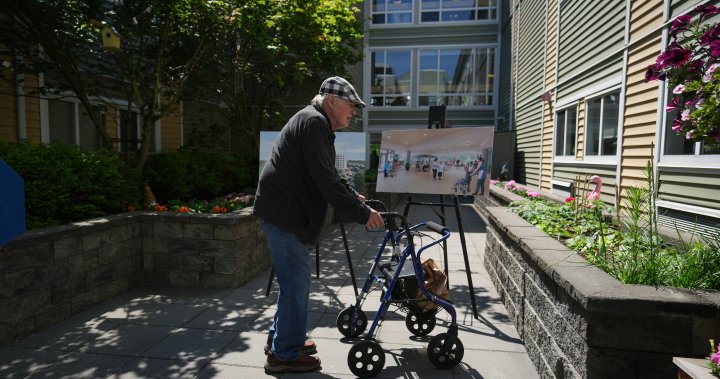As Canada experiences record-breaking heat waves, advocates are drawing attention to the lack of funding and consistent regulations for maintaining cool temperatures in long-term care homes. Currently, it is up to each province and territory to establish and enforce standards for air circulation and temperature control in these facilities. While many provinces base their policies on updated national standards, these standards are not mandatory. Critics argue that this inconsistency has allowed some long-term care homes to operate without adequate cooling measures during hot weather.
Vivian Stamatopoulos, a long-term care advocate and professor at Ontario Tech University, emphasizes the need for central heating and cooling systems to be a standard requirement in all long-term care facilities. She highlights the well-known connection between high temperatures and negative health effects, especially among seniors. Stamatopoulos criticizes elected officials for neglecting this issue, considering the reality of climate change and the likelihood of more extreme events impacting health in the coming years.
To address these concerns, the federal government allocated $3 billion in funding over five years in the 2021 budget to support improvements in long-term care across the country. Additionally, the Health Standards Organization (HSO) and the CSA Group received close to $850,000 in funding to develop updated national standards released earlier this year. However, the National Institute on Ageing recently released a report revealing that some provinces are failing to meet these standards. Only 25 out of 117 criteria outlined in the national standards have been incorporated into all provinces’ policies as of December 2022. Dr. Samir Sinha, co-author of the report and director of health policy research at the institute, acknowledges that this highlights the need for further action.
The updated standards cover various aspects of long-term care home building systems, including HVAC and medical gas systems, as well as protocols for managing extreme temperature conditions. The CSA Group confirms that these standards are intended as guidance and encourages their incorporation into legislation. However, they hope that even if the standards are not mandated, they will still serve as essential guidelines for stakeholders in the long-term care sector.
This concern comes as Environment Canada issues multiple heat warnings across the country, with temperatures exceeding 30°C in many areas. Some progress has been made in Ontario, where efforts have been made to ensure that all long-term care homes have air conditioning in residents’ rooms. Last summer, Global News reported that 90 homes in Ontario were still without air conditioning, but the government has taken steps to enforce legislation requiring its installation. As a result, 99.5% of long-term care homes in Ontario now have air conditioning.
In British Columbia, air conditioning in long-term care homes is not currently mandatory, although most facilities have HVAC systems. Seniors’ advocate Isobel Mackenzie supports the implementation of absolute temperature standards in residents’ rooms to ensure comfort and safety. She believes that British Columbia should follow Ontario’s lead in making cooling systems a requirement. However, the Ministry of Health explains that aging buildings present challenges in making air conditioning mandatory, and alternative measures such as fans are used to maintain cool temperatures.
Jodi Hall, CEO of the Canadian Association of Long-Term Care (CALTC), emphasizes the need for proper funding from the federal government to help meet standards and modernize existing long-term care homes. Hall suggests that a federal infrastructure fund specifically dedicated to long-term care homes’ needs would facilitate necessary improvements nationwide. Mackenzie also suggests using the National Building Code as a tool for change. She believes the government can use the code to support care homes immediately and consider making air conditioning a requirement in future building designs.
Overall, advocates urge the government to take action to ensure that long-term care homes have adequate cooling measures in place to protect vulnerable residents during extreme heat events.
Denial of responsibility! VigourTimes is an automatic aggregator of Global media. In each content, the hyperlink to the primary source is specified. All trademarks belong to their rightful owners, and all materials to their authors. For any complaint, please reach us at – [email protected]. We will take necessary action within 24 hours.


